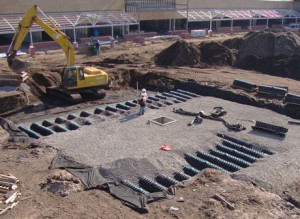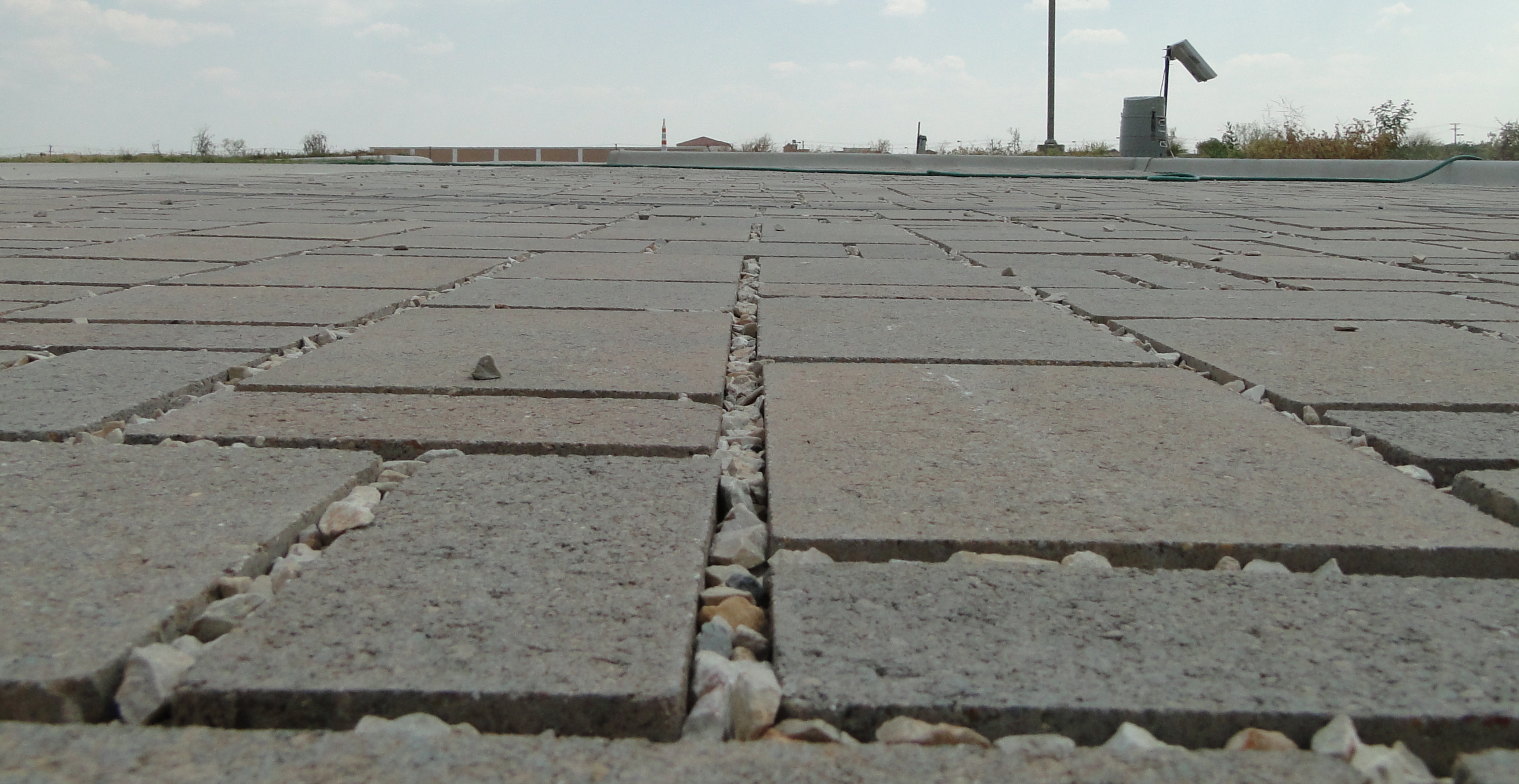
Installation of an underground stormwater detention system during a redevelopment project in Bluffton, S.C. (image courtesy of CULTEC, Inc.)
Underground storage chambers can provide onsite stormwater detention and are useful when development space is limited. During the recent redevelopment of an outlet mall in Bluffton, S.C., project engineers needed a solution that would save space and replace detention ponds constructed 20 to 30 years ago.
The eight-ha site now contains the first LEED®-certified retail location in South Carolina. Tanger Factory Outlet Centers Inc. is a 16,444-m2 facility with about 1000 parking spaces. According to Willy Powell, a P.E. at Ward Edwards Inc., the engineering firm that designed the stormwater system, an aboveground system would have required 10% to 15% — that’s 0.8 to 1.2 ha — of the available land. However, the engineers chose instead to use the Recharger® 150 HD, an underground chamber system with a storage volume of 4,785 m3. The system, manufactured by CULTEC (Brookfield, Conn.), is designed to handle the flow from a 25-year storm.
“The new stormwater system had to accommodate a large volume of runoff because we are located in a hurricane-prone county,” said Carl Close, project manager with Tanger Outlet Centers.
Bluffton also has a high groundwater table that is only 1.2 to 1.5 m below ground, so the system could not be very deep. At 84 cm wide × 47 cm tall, the “system gave us the needed storage capacity and, at the same time, fit in the tight space restricted by the high water table,” Close said.
The chambers were installed in eight beds under the parking area, which features a 2:1 ratio of impervious to pervious surfaces. Stormwater enters the system through a series of inlets, which are equipped with trash guards, through box structures that route runoff into the underground chambers. Two bioretention swales also drain runoff into the chambers.
After collection, runoff travels through an internal manifold and throughout the bed of stormwater chambers. Finally, it exits the system into a wetland located west of the site. Onsite infiltration was not possible due to high groundwater so the open-bottom chamber system functions as a detention solution.
According to Powell, the ease of system installation, was a key factor for the project team. For example, a conventional manifold consists of a pipe and fitting configuration. However, CULTEC provides an in-line side portal manifold, eliminating the need for an external pipe header.
The stormwater system offered LEED® points for reducing suspended solids and water pollution through runoff infiltration (LEED® credits: 6.1 and 6.2 for Stormwater Design: Quantity Control).




